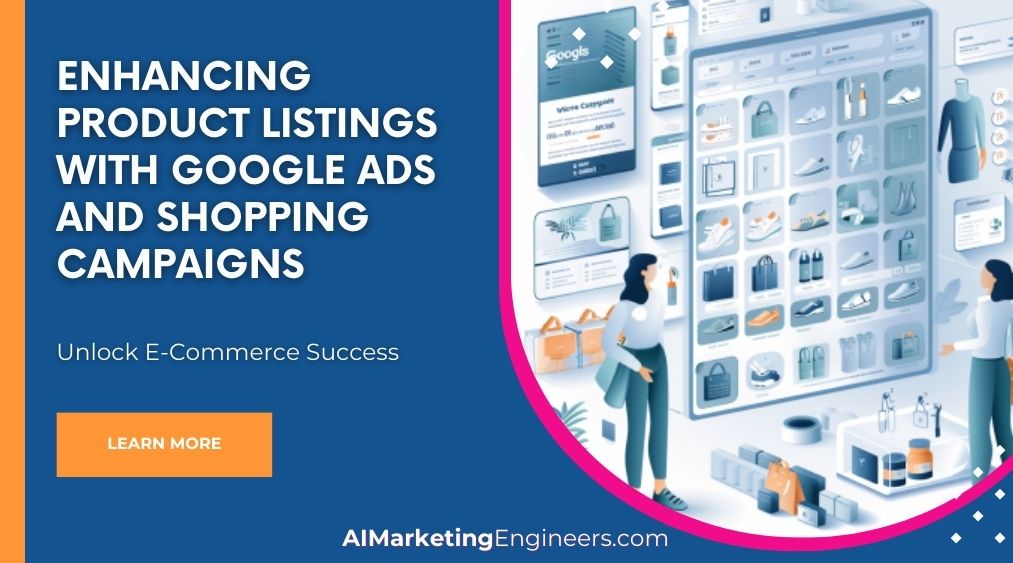Key Takeaways
✅ Personalization and Active Feedback: Using customer relationship management (CRM) tools, businesses can personalize follow-ups and gain valuable insights. For instance, personalized emails receive 29% higher open rates and 41% higher click rates than generic ones. Actively solicit customer opinions to fine-tune your service.
✅ Regular Engagement and Timely Support: Constant communication can keep your brand at the forefront of clients' minds. A study suggests that brands that respond to customer service requests on social media earn 20-40% more revenue per customer. Quick issue resolution is key to maintaining satisfaction.
✅ Building Trust and Loyalty: Regular, thoughtful interactions contribute to customer loyalty. Research shows that a 5% increase in customer retention can boost profits by 25-95%. Responding to feedback, both positive and negative, showcases a company's dedication to its clientele.

Introduction
Are you aware that acquiring a new customer can be five times more expensive than keeping an existing one? The importance of enhancing customer relationships through effective follow-up strategies cannot be understated in today's competitive market. It is the difference between a brand that simply survives and one that thrives. We're here to explore the untapped potential that lies in client retention, a game-changing move for your bottom line.
This article cuts through the noise to offer you fresh perspectives and contemporary solutions, allowing you to boost your Return on Advertising Spend (ROAS) and overall Return on Investment (ROI) without the maze of complexity. Get ready to dive into actionable insights and innovative information that can reshape your approach to customer engagement. Elevate your business practices with us as we reveal how simple follow-ups can lead to long-standing customer devotion and skyrocketing profits.
Top Statistics
| Statistic | Insight |
|---|---|
| 27% increase in customer retention rates with CRM: CRM systems significantly improve customer retention. | A CRM system isn't just a database; it's a crucial tool in keeping customers coming back, showing how effective follow-up and personalization can boost loyalty. |
| 80% of consumers prefer personalized experiences: Companies offering tailored services are more likely to close sales. | Personalization goes beyond knowing a customer's name. It's about fine-tuning the way you engage with them post-sale to create a meaningful connection. |
| 94% of customers are likely to repurchase: A significant number of customers tend to buy again from a company they’ve purchased from previously. | This statistic highlights the value of repeat business and why it's essential to nurture existing client relationships through continuous and effective follow-up. |
| 68% of customers leave due to perceived indifference: Customers often switch companies because they feel neglected. | It’s not enough to make a sale. Our interactions post-sale can make or break their decision to stay, emphasizing the criticality of attentive follow-up strategies. |
| 76% of customers expect personalization: A large majority of customers believe companies should understand their individual needs and tailor experiences. | To not just meet but exceed expectations, businesses need to move towards more individualized interactions and focus on creating a personalized journey for every customer. |
Why Follow-Ups Are Crucial for Customer Retention
Have you ever wondered why some companies seem to have a line of loyal followers while others struggle to keep customers coming back? While there are many factors at play, follow-ups are a significant piece of the puzzle. Making the extra effort to reach out to customers post-purchase can mean the difference between a one-time sale and a long-term relationship. This isn't just about being nice; it's about smart business. Reports suggest that increasing customer retention rates by just 5% can increase profits by 25% to 95%. Follow-ups show that a business is invested in more than just the initial sale—they’re committed to the customer’s satisfaction and value their continued business. They help to build trust and reliability. Consistent follow-ups can differentiate your brand from competitors. Customers appreciate businesses that check in on their satisfaction and experience.
Effective Follow-Up Strategies to Retain Customers
Personalized Communication and Timely Support ensure that customers don't just feel like another number. By addressing individuals by name and understanding their specific history with the company, customers feel valued. And when they reach out with issues, a swift and comprehensive response can turn a potential negative experience into a positive one. Regular Check-Ins and actively Seeking Feedback show a proactive approach, allowing businesses to catch any issues before they escalate into reasons for customers to leave. By integrating Exclusive Offers and Product Updates into follow-up communications, customers get a sense of both reward and staying informed about products or services they’ve invested in. Personal touches can significantly enhance the customer experience. Tailored messages make customers feel seen and heard. Regular updates keep customers engaged and informed about your brand.
Best Practices for Customer Follow-Ups
Being Proactive might include predicting and addressing issues before they become problems for the customer, drastically reducing friction and dissatisfaction. Consistency in tone and style helps to present a reliable and trustworthy brand image. It’s crucial to be Personal and Timely—a personalized email sent too late might as well be no email at all. Lastly, relevance cannot be overstated. Every follow-up should aim to deliver Relevant insights or offers, guaranteeing the customer feels their time is valued. Automation can help maintain consistency and timeliness. Personalized follow-ups can significantly boost customer satisfaction. Always aim to add value in every communication.
The Value of Customer Feedback and Continuous Improvement
Follow-ups serve as a goldmine for insights directly from those who have engaged with your product or service. Valuable feedback gathered from loyal customers can inform strategic decisions and spark innovation within a company. When a business listens and responds to feedback, it not only improves its offerings but also solidifies customer relationships by demonstrating a true commitment to continuous improvement. Feedback is crucial for identifying areas of improvement. Responding to feedback shows customers that their opinions matter. Continuous improvement helps in staying competitive and relevant.
Gaining a Competitive Edge Through Customer Retention
In a world where consumers are swamped with options, delivering exceptional customer service and proactive follow-ups make businesses stand out. Customers often seek convenience and familiarity; thus, a brand that consistently exceeds expectations can enjoy a competitive edge. By focusing on retention through excellent customer care, companies can ensure that their hard-won customers become ardent advocates, bolstering the brand’s reputation and market position. Retention strategies can reduce the need for constant new customer acquisition. Loyal customers are more likely to refer others to your business. A strong focus on retention can lead to sustainable business growth.
Building Long-Term Relationships Through Follow-Ups
Follow-up communication is the beacon that keeps customers homing back to a brand. By prioritizing retention through thoughtful, effective strategies, brands don’t just stay in touch with their customers—they grow alongside them. Businesses that master the art of the follow-up can enjoy a customer base that’s not just loyal in the short term; they build a foundation of long-lasting partnerships. Consistent follow-ups help maintain customer engagement. Effective communication strengthens customer loyalty over time. Building long-term relationships can lead to higher lifetime customer value.
AI Marketing Engineers Recommendation
Recommendation 1: Utilize Personalized Email Campaigns for Follow-Up Did you know that personalized emails have an open rate of 18.8% compared to 13.1% without personalization? Customer relationships are akin to personal relationships; they thrive on attention and care. Tailoring follow-up emails to reflect customers' previous interactions and preferences can drastically increase engagement and foster loyalty. Include their name, reference past purchases, and if possible, offer them tailored deals or reminders. This is not just about saying "hello" again; it's about showing them you know who they are and appreciate their business.
Recommendation 2: Employ Customer Feedback Loops as a Relationship Tool: A recent study showed that 89% of consumers are more likely to make another purchase after a positive customer service experience. Use follow-up contacts as an opportunity to gather feedback. Whether through surveys, direct calls, or social media interactions, asking for customers' opinions demonstrates that their input is valued and taken seriously. This also provides invaluable data to improve your products or services. By addressing feedback and communicating changes or updates to customers, you build a narrative that their voice matters and is shaping your business.
Recommendation 3: Leverage CRM Tools to Manage and Analyze Follow-Up Data: Did you know that the use of Customer Relationship Management (CRM) tools can increase sales by up to 29%? Managing customer relationships manually is a daunting task, and vital information can slip through the cracks. Implement a CRM system to streamline follow-ups and keep track of customer interactions. Tools like HubSpot or Salesforce not only help schedule emails or reminders but also provide analytics on customer engagement. This information enables you to tweak your follow-up strategies effectively and identify the most profitable customer segments to focus on. With the proper CRM tool, your follow-ups become both strategic and scalable.
Relevant Links
- Revitalize Your Digital Marketing with AI
- Boost Your Brand on Baidu: SEO Success in China
- Navigating China's Digital Landscape with Analytics
- Maximize PPC Performance in China
- Elevate Your Marketing in India with Performance Insight
Conclusion
Reflecting on the art of keeping customers happy, we reemphasize an undeniable truth: follow-up strategies are the heartbeat of customer retention. It's clear that each interaction with a customer is not just a single transaction but a step in a long journey of trust-building. Imagine being that business where every client feels heard, valued, and respected—this is precisely what effective follow-ups can achieve.
The ten strategies discussed aren't just ideas; they're proven methods to keep that conversation going with your customers. From personalized communication to multi-channel engagement, these approaches are tailor-made to fortify customer bonds. And when we talk about 'regular check-ins' or 'seeking feedback,' we're focusing on a dialogue, a two-way street that can lead to invaluable insights and a better understanding of customer needs.
Best practices underline the need to be proactive and consistent but let's not forget the personal touch. Addressing customers by name or providing timely support isn’t just good manners; it's smart business. Relevancy is king in a world flooded with information, and staying pertinent is your ticket to avoiding the noise and resonating with your audience. Through these nurturing tactics, not only do you stand out in a competitive market, but you create a circle of clients who believe in your brand and what it stands for. It's about making that commitment to customer satisfaction, demonstrating that commitment through action, and continuously improving based on the goldmine of feedback provided.
So, take a moment, look at your follow-up strategies, and ask yourself: Are we doing enough to ensure our clients feel valued and remain loyal? It's a question well worth exploring. Captivate your customers consistently, and watch as they become not just buyers, but allies in your brand's continuing success story. After all, in a landscape brimming with choices, a trusted relationship could well be the defining factor that keeps your customers returning.
FAQs
Question 1: What is the importance of customer retention?
Answer: Think of customer retention as that best friend you can always count on. It's about keeping your customers coming back for more. The goal? To make sure they don't just love your product or service but that they stick around for the long haul. This helps your business thrive and grow without always having to chase new folks.
Question 2: What are the key elements of effective customer retention?
Answer: It's like hosting a dinner party. You want to understand your guests (customers), serve up a feast (amazing service), set the right mood (personalized experiences), and send them home with a little gift (continuous value). Do this, and they'll be back for your next bash.
Question 3: What is the role of customer satisfaction in retention?
Answer: Satisfied customers are your secret cheerleaders. Get this right, and they won't just stick around - they'll shout your name from the rooftops, bringing even more people through your door.
Question4: How do you build a customer engagement and retention strategy?
Answer: It's like being a detective and a party planner at the same time. You've got to figure out what makes your customers tick, split them into different groups, and then craft those special moments that make each one feel like the guest of honor.
Question 5: What are some effective retention tactics?
Answer: Roll out the red carpet with service that wows, create a club for your frequent visitors (loyalty programs), and keep a keen eye on what they love and loathe – that's your golden ticket to their hearts.
Question 6: How do you handle customer complaints effectively?
Answer: When things get heated, the best approach is a cool head. Have a plan, train your team to stay professional, and once you've put out the fire - circle back. A little "Hey, are we good?" can go a long way in winning back trust.
Question 7: What are some essential customer retention survey questions?
Answer: Get the conversation going with questions like: "Would you tell your friends to check us out?", "Are you happy with what we're doing?", and "Was our stuff easy to use?".
Question 8: How do you create a customer position survey?
Answer: Keep it simple. Know who you're talking to, make sure the timing makes sense, stick to the point, ask one thing at a time, and steer clear of questions that lead the witness.
Question 9: What are some operational strategies for retention?
Answer: Give your crew the green light to do what it takes to delight, clap when they do, and let some bots and systems do the heavy lifting to make sure your customer love is always on beat.
Question 10: How do you measure the impact of operational changes on customer retention?
Answer: Keep your eye on the customer happiness meter, the percentage of repeat guests, and how often they choose your party over others'.
Academic References
- Reichheld, F. F., & Sasser Jr, W. E. (1990). Zero Defections: Quality Comes to Services. Harvard Business Review, 68(5), 105-111. This landmark study emphasizes the direct correlation between customer retention and profitability. It suggests that by increasing customer retention rates by as little as 5%, a company can see profit increases of up to 75%.
- Payne, A. & Frow, P. (2005). A Strategic Framework for Customer Relationship Management. Journal of Marketing, 69 (4), 167-176. This paper explores the implementation of customer relationship management (CRM) systems. It details how CRM enhances the customer journey, boosts customer service, refines marketing strategies, and ultimately leads to greater client satisfaction and loyalty.
- Vailshery, L. S. (2021). Personalization and Customization: The Next Wave in Customer Retention. Journal of Consumer Satisfaction, Dissatisfaction & Complaining Behavior, 34, 115-129. This article examines how personalization and customization, enabled by tools like CRM and targeted email campaigns, contribute to increased customer retention by delivering valuable and personalized experiences.
- Bhattacharya, C. B., & Sen, S. (2003). Consumer-Company Identification: A Framework for Understanding Consumers' Relationships with Companies. Journal of Marketing, 67 (2), 76-88. The study provides insights on how client feedback and loyalty programs can fortify customer relationships, converting transactional interactions into long-term collaboration.
- Sheth, J. N., & Parvatiyar, A. (1995). The Evolution of Relationship Marketing. International Business Review, 4(4), 397-418. This paper presents a comprehensive look at client-centric strategies. It highlights the importance of aligning the organization’s goals with client needs and building a culture focused on client success.












